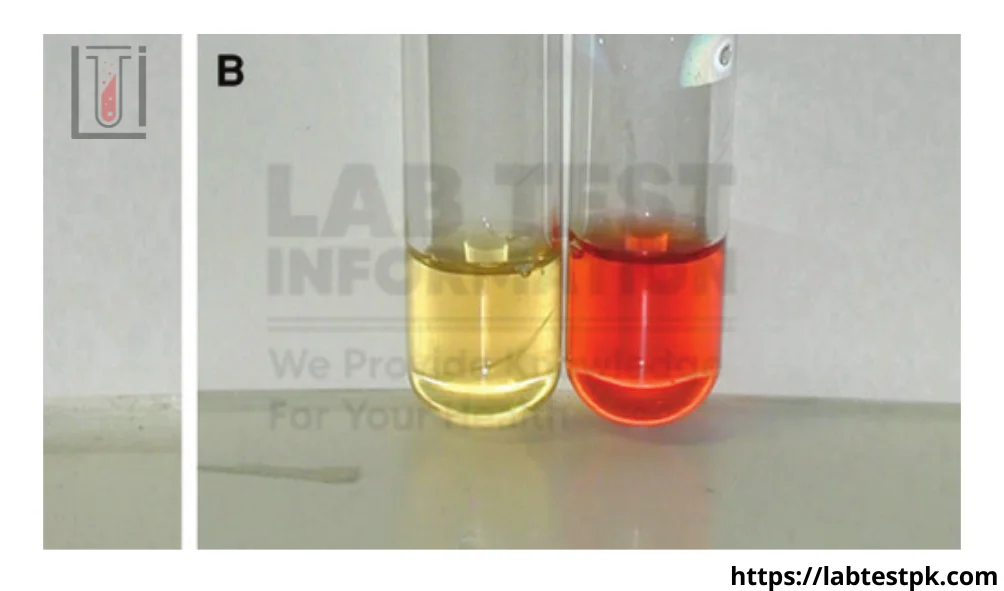Urine Porphobilinogen (PBG) is a chemical compound involved in the biosynthesis of heme, a component of hemoglobin. It is an intermediate in the porphyrin pathway, which is responsible for the production of heme in the body. Porphobilinogen is converted into other intermediates before ultimately forming heme.
Urine porphobilinogen (PBG) testing is often used in the diagnosis of porphyrias, a group of rare genetic disorders that affect the nervous system or skin. Porphyrias result from deficiencies in enzymes involved in heme synthesis, leading to the accumulation of porphyrins or their precursors.
Acute intermittent porphyria (AIP) is one specific type of porphyria that may be associated with increased levels of porphobilinogen in the urine during acute attacks. Symptoms of AIP can include abdominal pain, neuropathy, psychiatric symptoms, and other neurological manifestations.
How the Test is Performed?
The urine porphobilinogen (PBG) test is a diagnostic test used to detect the presence of porphobilinogen in urine, which can be elevated in certain porphyrias, especially during acute attacks.
What do the Urine PBG test result mean
The interpretation of urine porphobilinogen (PBG) test results depends on the context of the patient’s symptoms, medical history, and other diagnostic findings. Elevated levels of PBG in urine can be indicative of certain porphyrias, especially during acute attacks. Here’s a general guide to interpreting urine PBG test results:
- Normal Results:
- Normal levels of porphobilinogen in urine suggest that the patient is not currently experiencing an acute attack of porphyria. However, normal results do not rule out the possibility of other types of porphyrias or related conditions.
- Elevated Results:
- Elevated levels of porphobilinogen in urine may suggest the presence of porphyria, especially acute intermittent porphyria (AIP). AIP is characterized by intermittent attacks of symptoms such as abdominal pain, neuropathy, and psychiatric manifestations.
- Interpretation in the Context of Symptoms:
- The results should be interpreted in the context of the patient’s clinical symptoms. A healthcare provider will consider whether the patient is experiencing an acute attack, the nature of the symptoms, and other laboratory findings.
- Confirmation and Further Testing:
- While elevated PBG levels in urine can be suggestive, they are not sufficient for a definitive diagnosis. Further testing, including genetic testing and measurement of other porphyrin precursors, may be needed to confirm the specific type of porphyria.
- Differential Diagnosis:
- Elevated PBG levels can be caused by factors other than porphyrias. It’s essential to consider other potential causes, such as certain medications or medical conditions, that may affect porphyrin metabolism.
FAQ:
Q: What is the purpose of the urine PBG test?
A: The urine PBG test is conducted to measure the levels of porphobilinogen in urine. Elevated levels may indicate certain porphyrias, which are rare genetic disorders affecting heme production.
Q: How is the urine sample collected for the PBG test?
A: A 24-hour urine collection is often required. During this period, all urine is collected in a special container, and a preservative is added to maintain the stability of porphobilinogen.
Q: Are there any dietary restrictions before the urine PBG test?
A: Specific dietary restrictions may not be common, but it’s crucial to follow any instructions provided by your healthcare provider. Inform them about your diet and any supplements you are taking.
Q: Can medications interfere with the urine PBG test results?
A: Yes, certain medications can affect porphyrin metabolism. It’s important to inform your healthcare provider about all medications, including prescription, over-the-counter, and herbal supplements.
Q: What conditions or symptoms might prompt a healthcare provider to order a urine PBG test?
A: Symptoms such as abdominal pain, neuropathy, and psychiatric manifestations may prompt a healthcare provider to order a urine PBG test, especially if porphyria is suspected.
Q: Can the urine PBG test diagnose the specific type of porphyria?
A: Elevated PBG levels suggest a porphyria, but further testing, such as genetic testing and measurement of other porphyrin precursors, is usually needed to determine the specific type of porphyria.
Q: How is the accuracy of the urine PBG test ensured?
A: Accurate results depend on proper sample collection, handling, and preservation. It’s crucial to follow the specific instructions provided by the healthcare provider or laboratory.
Q: Are there any risks or side effects associated with the urine PBG test?
A: The urine PBG test itself is a relatively low-risk procedure. However, improper collection or handling of the urine sample may lead to inaccurate results. Always follow the recommended procedures.
Q: Can the urine PBG test be done at any time, or does it need to be during an acute attack?
A: While the test can be done at any time, it may be particularly informative during an acute attack when porphobilinogen levels are more likely to be elevated.
Q: What happens if the urine PBG test results are abnormal?
A: Abnormal results may suggest the presence of porphyria. Further diagnostic tests and consultation with a specialist are typically needed to confirm the diagnosis and determine the appropriate course of action.


[…] Epithelial Cells In Urine, Epithelial cells are cells that make up the lining of various organs and structures in the body, including the urinary tract. When we talk about epithelial cells in urine, we are referring to the presence of these cells in a urine sample. […]
[…] may experience pus cells in their urine due to specific factors. Understanding these considerations and implementing appropriate treatments […]